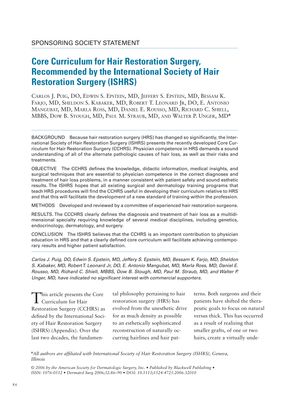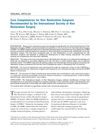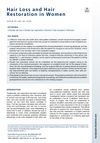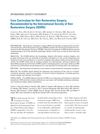Core Curriculum for Hair Restoration Surgery, Recommended by the International Society of Hair Restoration Surgery
January 2006
in “
Dermatologic Surgery
”

TLDR The International Society of Hair Restoration Surgery established a curriculum in 2005 to standardize knowledge and skills for treating hair loss, emphasizing it as a multidimensional specialty.
In 2005, the International Society of Hair Restoration Surgery (ISHRS) created the Core Curriculum for Hair Restoration Surgery (CCHRS) to standardize the necessary knowledge and skills for physicians in diagnosing and treating hair loss. The curriculum, developed by a committee of experienced hair restoration surgeons, covered a broad spectrum of topics such as the basic science of hair, clinical science, professional and regulatory topics, and interdisciplinary patient care. The ISHRS intended the CCHRS to be beneficial for existing surgical and dermatology training programs and to aid in establishing a new training standard within the profession. The curriculum underscored that diagnosing and treating hair loss is a multidimensional specialty, requiring knowledge from various medical disciplines like genetics, endocrinology, dermatology, and surgery.





